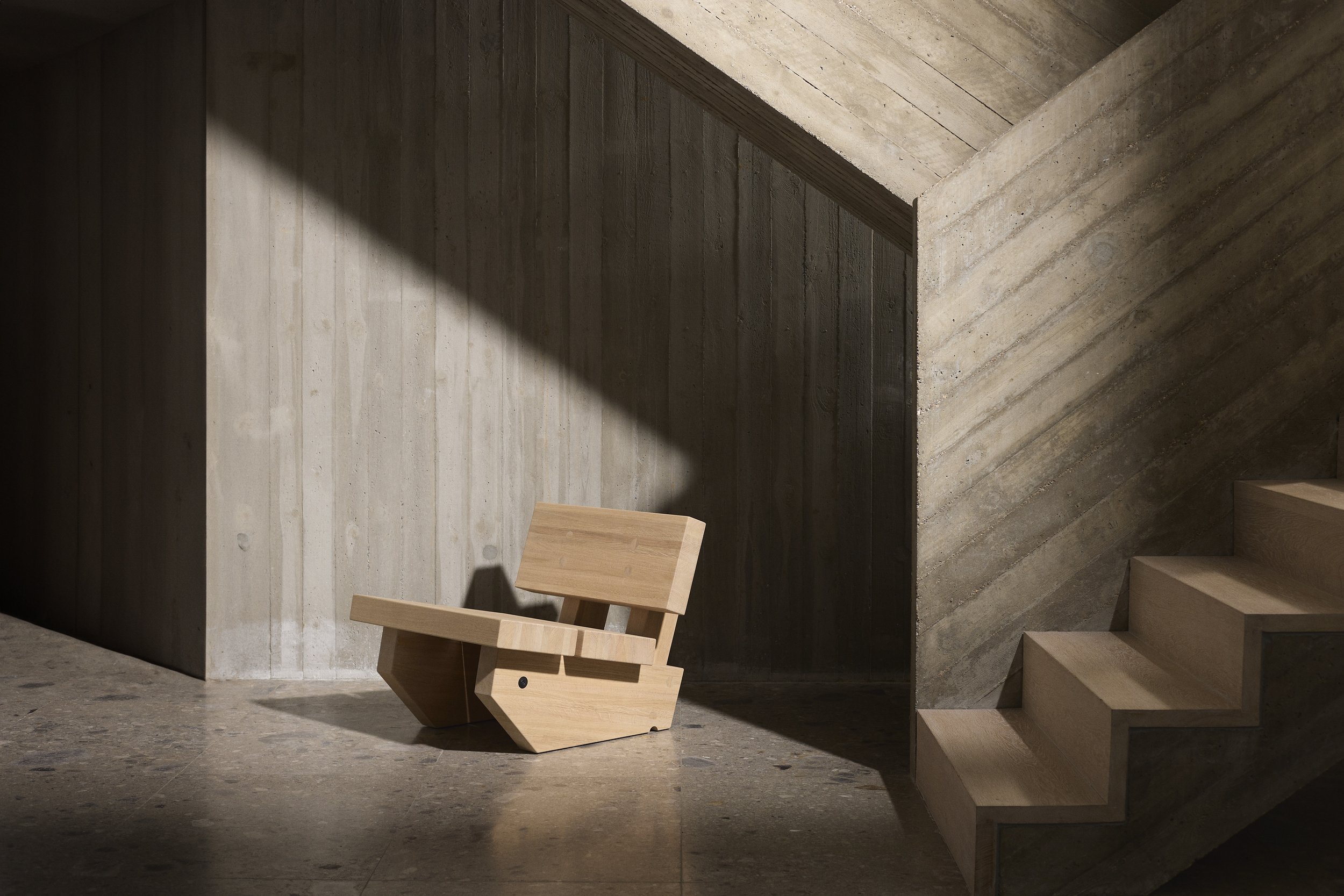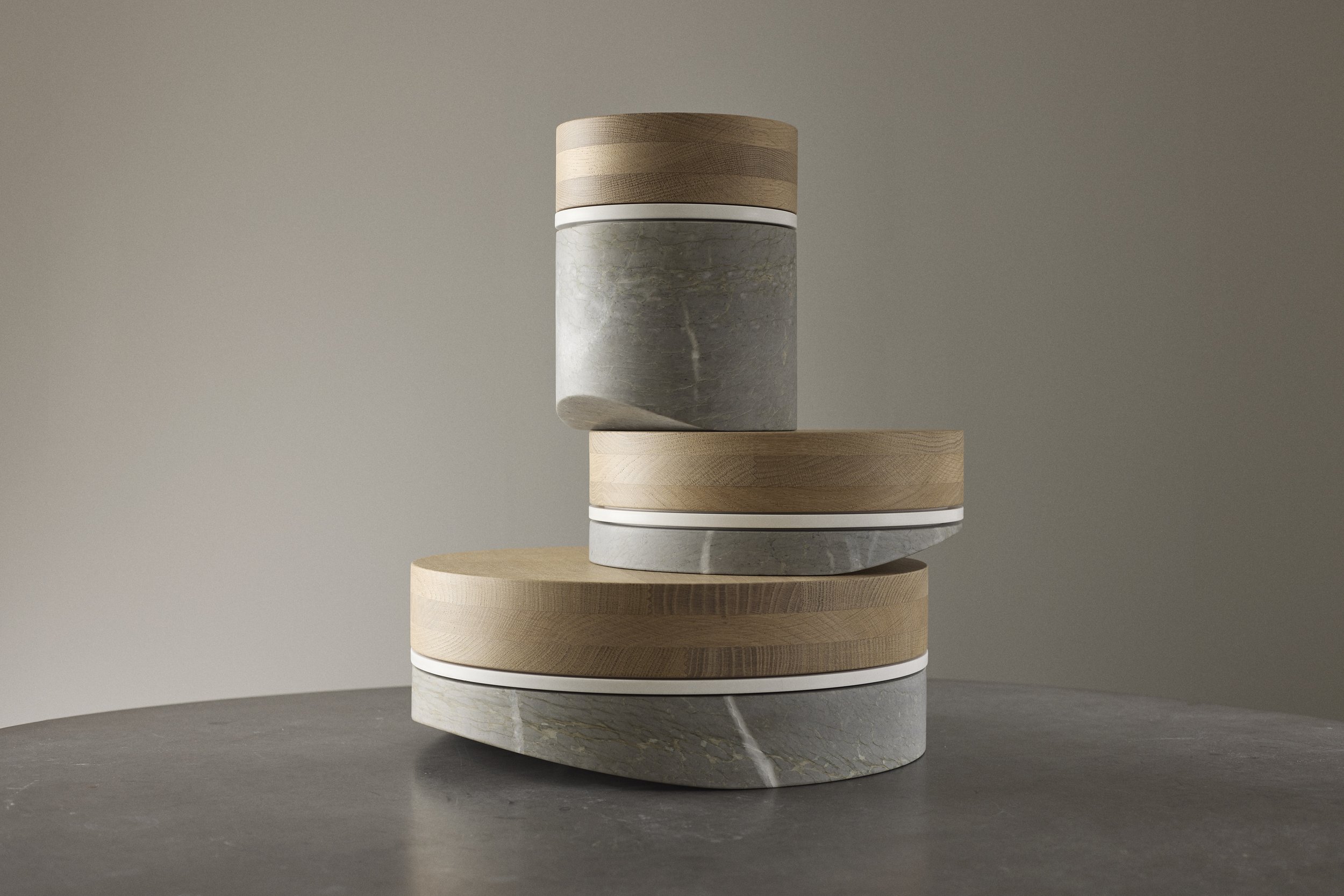
Più Objects by Filip Tack
In a departure from conventional furniture collections, Belgian designer Filip Tack has unveiled a series of meticulously crafted objects that challenge the boundaries between functional necessity and sculptural presence.
The Più objects series, developed through extensive material research and artisanal collaboration, presents a nuanced exploration of domestic archetypes reimagined through a contemporary lens.
Each piece within the series emerges from a rigorous investigation of essential living patterns, informed by anthropological studies including Peter Menzel's seminal work documenting material culture across global households. This research manifests in a collection that transcends mere furniture to become what Tack describes as "objects for living" - pieces that evolve with their inhabitants while maintaining an unwavering commitment to craftsmanship.
The collection's material palette centers on natural oak, offered in either its raw state or with a sophisticated black stain treatment. Each piece is handcrafted in Belgium, bearing individual numbering that speaks to its limited production nature. The manufacturing process emphasizes what Tack terms "slow furniture," where traditional woodworking techniques merge with contemporary engineering solutions.
Among the standout pieces is the 'chll' seating element, which demonstrates Tack's innovative approach to user interaction. The chair's inclination can be modified through an ingenious mechanism that allows a structural element to be repositioned between the side and back, creating varying degrees of recline while maintaining visual coherence.
The 'hdsk' paravent further exemplifies this multifunctional approach, incorporating brass hardware elements that transform it from a simple room divider into a sophisticated wardrobe system. Meanwhile, the 'srvm' serving piece employs concealed magnetic connections to facilitate multiple configurations, challenging traditional furniture typologies through its adaptable nature.
Rather than adhering to conventional collection parameters, each Più object maintains its autonomy while engaging in careful dialogue with its environment. Tack's attention to detail manifests in subtle design elements - beveled edges that enhance tactility, concealed hinges that maintain clean lines, and precisely engineered connections that ensure longevity.
The series represents a significant evolution in Tack's practice, which spans residential and commercial interior architecture. His approach to furniture design mirrors his architectural work, where sophisticated finishes and sustainable materials create environments that respond to daily rhythms and natural light. The resulting pieces embody a design philosophy where innovation serves function while remaining visually understated, creating objects intended to transcend generations through their material quality and formal resolution.
More detailed information on the various objects can be found via this website.
Related Content
"Woodland Whispers," an evocative exhibition by no.29, transforms the entry room of Amelie, Maison d'Art's NYC location into a contemplative sanctuary.
Fusina is a sculptural fire pit designed by José Bermúdez, paying tribute to the architectural style of Venetian architect Carlo Scarpa, with an intriguing organic shape that enhances the connection between the object and the user.
Lodes presents Cono di Luce in collaboration with Ron Arad Available from January 2024













